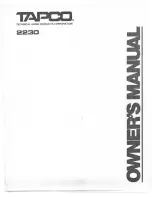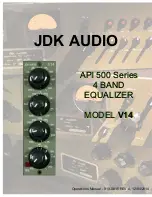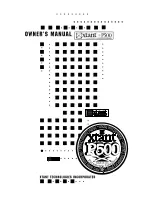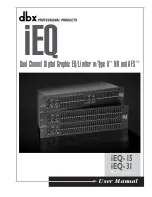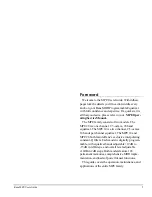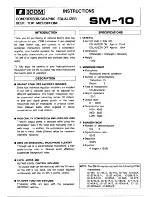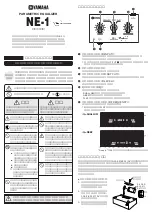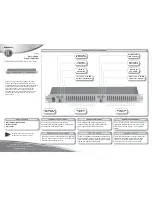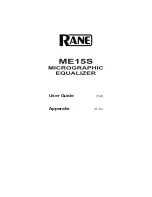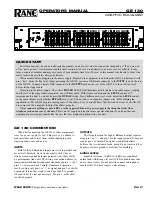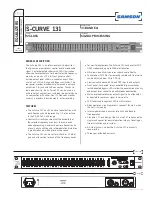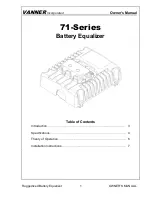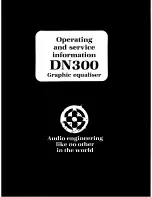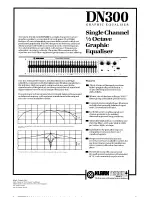
iA231F / iA231FD User's Manual
PHONIC CORPORATION
page 8
page 9
PHONIC CORPORATION
iA231F / iA231FD User's Manual
Feedback Control
In live performance applications, graphic equalization
is almost always applied separately to stage monitors
or foldback systems to reduce the level of frequencies
that would otherwise cause feedback problems. These
problems occur due to peaks in the frequency response
curves of the monitor speaker system, as well as due to
monitor positioning and sound reflected from the stage
walls.
The iA graphic equalizer features a feedback detection
systems that, when activated, will allow users to
recognize problem frequencies by illuminated LEDs on
the VR sliders. When this occurs, and if the feedback is
audible, simply reduce the affected frequencies until the
feedback becomes inaudible and/or the LED goes out.
Of course, feedback may be inadvertantly detected
by the device if the signal includes an abundance of
frequencies similar to those of feedback (some electric
guitars, for example). If this is the case, simply ignore the
detected "feedback".
The iA graphic equalizer can be used to provide some
control over moderate feedback problems, but does not
have enough flexibility or resolution to handle severe
situations.
If you find feedback points covering many equalizer
bands and cutting every band doesn’t help, then it
would be advisable to reduce the system gain. The
combination of a graphic equalizer for tone control and
a parametric equalizer for feedback control is highly
recommended.
Channel Equalization
Many mixers provide only simple equalization for
individual channels, typically two or three bands. If your
mixer has channel inserts, you can patch your equalizer
into a channel that is being used for something important
and use it to tailor the sound of this channel exactly the
way you need for your setting.
Large Room Equalization
Large venues tend to suffer from multiple reflections
with long delays and reverberation times; all of which
lead to reduced intelligibility and a generally muddy
sound. As sound travels long distances through the
air, high frequencies are attenuated more than low
frequencies. In general, a large room benefits from
some low frequency roll-off and some high frequency
boost. Therefore, reducing the low frequency output
may produce real advantages in buildings made from
concrete or stone, where much of the bass is reflected
rather than absorbed. Also rolling off the high frequency
end above 5 kHz may also contribute to a more natural
sound. Depending on the individual sound system and
the environment, the shape of the optimum house curve
will vary and a degree of experience is needed in order
to achieve the best result.
Quick Tips
Using the low cut filter will remove stage rumble and
various low-frequency feedback signals that may cause
your sound to lose it's crispness. Audition a few LCF
settings before deciding which is best for you.
Be sure to choose the optimal position for your speakers,
because no matter how much equalization you have, if
your audio is bouncing off walls and floors, it can still
sound dull.
Using a Personal Audio Analyzer with an EQ setting
function will allow you to determine how to set your
equalizer up without a fuss. In live gigs, it is strongly
suggested that this measure be taken to get the most
out of your audio.
OPERATION
Summary of Contents for IA231F
Page 10: ...iA231F iA231FD User s Manual PHONIC CORPORATION page 10 FREQUENCY CHART...
Page 14: ......
Page 15: ......
Page 16: ......

















